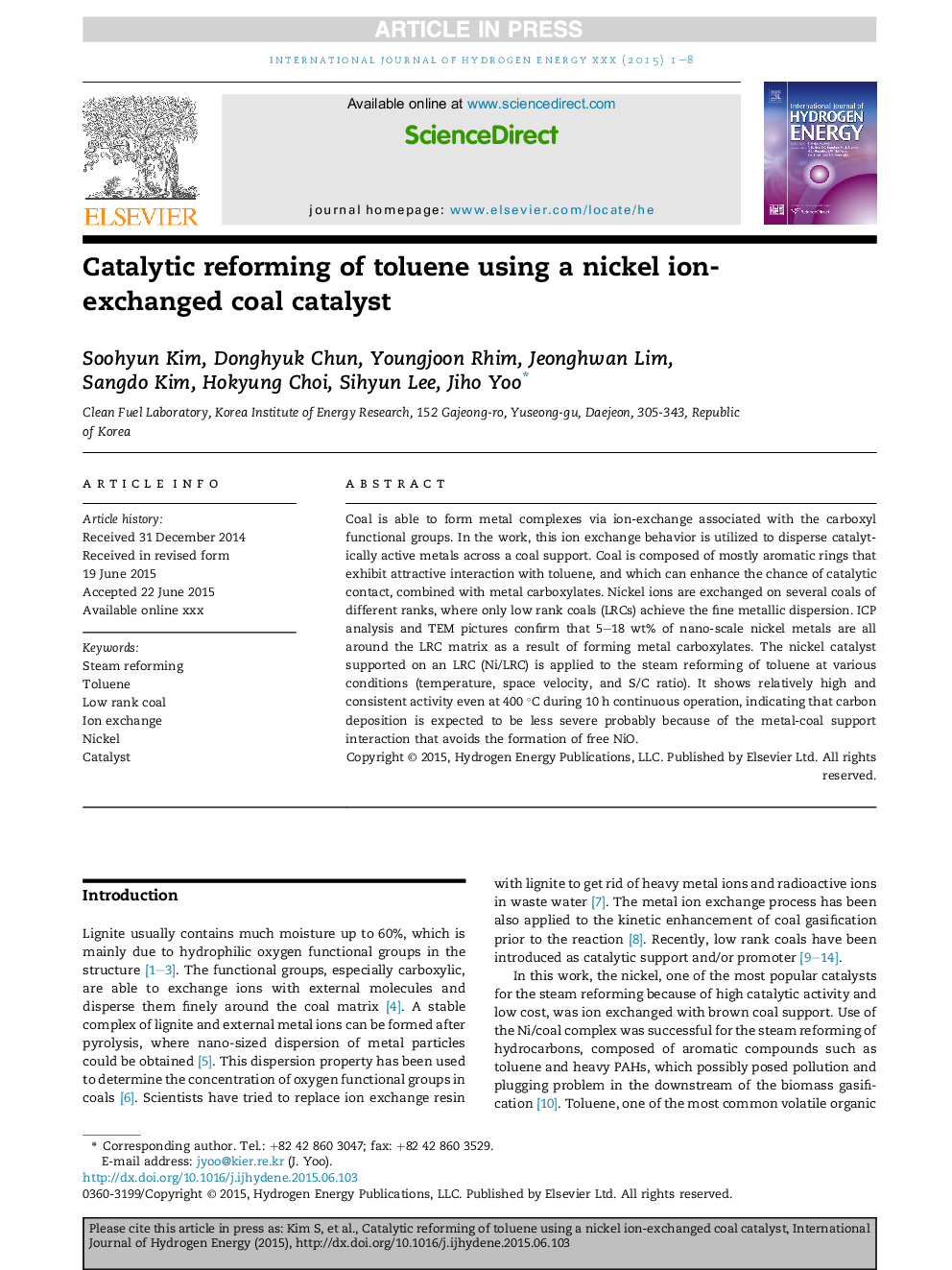| Article ID | Journal | Published Year | Pages | File Type |
|---|---|---|---|---|
| 7714380 | International Journal of Hydrogen Energy | 2015 | 8 Pages |
Abstract
Coal is able to form metal complexes via ion-exchange associated with the carboxyl functional groups. In the work, this ion exchange behavior is utilized to disperse catalytically active metals across a coal support. Coal is composed of mostly aromatic rings that exhibit attractive interaction with toluene, and which can enhance the chance of catalytic contact, combined with metal carboxylates. Nickel ions are exchanged on several coals of different ranks, where only low rank coals (LRCs) achieve the fine metallic dispersion. ICP analysis and TEM pictures confirm that 5-18 wt% of nano-scale nickel metals are all around the LRC matrix as a result of forming metal carboxylates. The nickel catalyst supported on an LRC (Ni/LRC) is applied to the steam reforming of toluene at various conditions (temperature, space velocity, and S/C ratio). It shows relatively high and consistent activity even at 400 °C during 10 h continuous operation, indicating that carbon deposition is expected to be less severe probably because of the metal-coal support interaction that avoids the formation of free NiO.
Related Topics
Physical Sciences and Engineering
Chemistry
Electrochemistry
Authors
Soohyun Kim, Donghyuk Chun, Youngjoon Rhim, Jeonghwan Lim, Sangdo Kim, Hokyung Choi, Sihyun Lee, Jiho Yoo,
